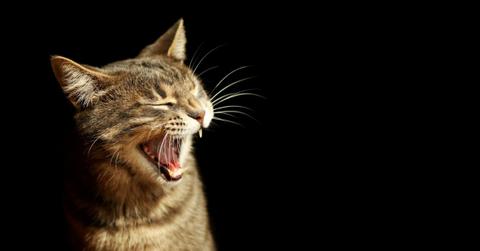Feline Find: 15-Million-Year-Old Fossilized Jaw Bone Belonged to Prehistoric Cat Species with Powerful Bite

A new prehistoric species of cat, Magerifelis peignei, has been discovered in Spain, and researchers say it hunted with a powerful bite.
Spanish researchers have recently identified a previously unknown prehistoric cat species in Spain, suggesting that the medium-sized feline utilized a powerful bite as a primary hunting mechanism when it inhabited the Earth over 15 million years ago, according to sources.
The discovery was made by a team of scientists from the National Museum of Natural Sciences in Madrid, who introduced the newly identified species as Magerifelis peignei. Their findings were detailed in a study recently published in the Journal of Vertebrate Paleontology.
The investigation centered around the analysis of a fossilized jawbone fragment uncovered during renovations beneath the Príncipe Pío train station, alongside a nearby retail mall.
The site, originating from the Miocene era, dating between 23 and 5 million years ago, provided crucial insights into this ancient feline.
According to Manuel Salesa, a researcher at MNCN and one of the study's authors, the paleontological site in Príncipe Pío revealed intriguing fossils from the middle Miocene, including a remarkable jawbone of a small feline.
The fossil, comprising the lower half of the jaw, is “very well preserved,” lacking only the incisors.
A notable feature highlighted by the researchers was the presence of a slightly lower second molar, a characteristic not found in contemporary cats except for the extinct "Proailurus," the oldest cat species in the fossil record.
The study emphasized the “very robust” nature of the jaw, indicating the Magerifelis peignei's ability to withstand significant tension during biting, suggesting it possessed a powerful bite for hunting.
- What Lies Beneath: NASA Scientist Believes Aliens May Have Found 'Perfect' Hiding Spot in Earth's Oceans
- Global Threat: Russia Insider Warns West of 'World War Using Nuclear Weapons' Amid Escalating Support for Ukraine
- Countdown to Disaster? Ex-NATO Official Warns Russia, Iran and China Could Wage WWIII in Just Years
This implies that these prehistoric felines may have targeted larger prey compared to their contemporary counterparts.
"In addition to this resistance to tension, the muscles responsible for the bite have highly developed insertion areas, indicative of relatively larger muscle masses than those of other felines of similar size," explained Salesa.
Never miss a story — sign up for the Front Page Detectives newsletter. Be on the scene the moment news breaks.
While similarly sized modern felines typically consume small vertebrates like rodents and birds, the researchers speculated that the Magerifelis peignei likely preyed on larger animals due to its capacity for powerful bites.
To visualize the ancient cat, the research team employed computed tomography (CT) scanning technology, creating a virtual 3D reconstruction of the jawbone. An artistic rendering based on this reconstruction depicted a striped feline with large, robust teeth.
The species received its name, Magerifelis peignei, by combining "Magerit," the original title of Madrid, with "Felis," the Latin term for "cat." This species pays homage to the French paleontologist Stéphane Peigné.
Become a Front Page Detective
Sign up to receive breaking
Front Page Detectives
news and exclusive investigations.
